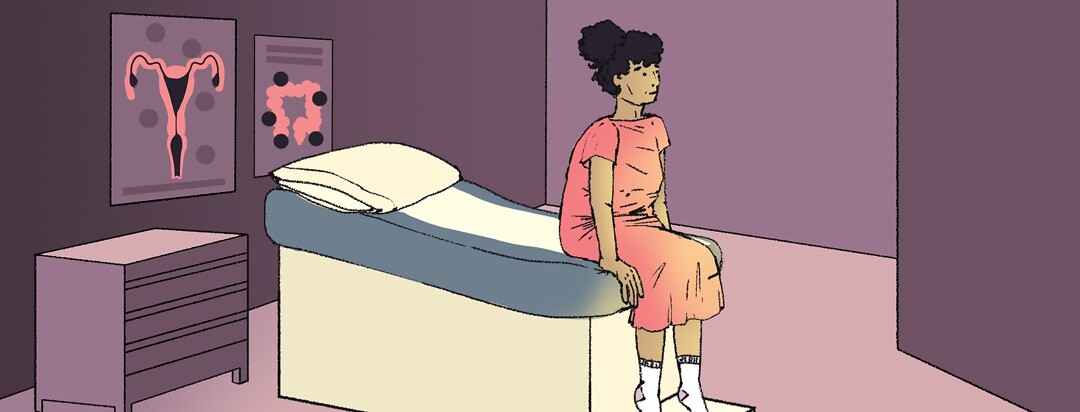My Recovery From Excision Surgery
Endometriosis is a complex disease. And the only way to see what’s really going on is with a laparoscopy. That’s when a doctor makes a small incision in your belly button so they can insert a camera inside your body and look around. In the past, I’ve had this procedure followed by ablation, or burning, of endometriosis. But my latest treatment would be laser excision — when tissue is cut out.
That left me wondering: would my recovery be different?
What my surgery involved
I had excision (with a specialist) to address the following symptoms: lower right-side pain, diaphragm cramps while exercising, right leg and hip pain, bladder pain, and deep pain with sex. Relief from period pain would be a plus, but not something I expected; I likely have adenomyosis and I’m not interested in a hysterectomy.
During my laparoscopy, the surgeon excised or removed the following:
- My appendix. Studies show some people with endo, especially those with lower right quadrant pain, often feel better when this tiny organ is removed. And sometimes there’s endo in the appendix even if it looks fine from the outside. (Mine was negative for endo, but I told him to take it out even if it looked healthy.)
- Scar tissue. Also called adhesions, my doctor removed these in a couple areas. Particularly troubling was an abnormal amount between my right abdominal wall and intestines — a place I have substantial pain — causing them to stick together.
- Lesions "suspicious" for endo. My doc cut out anything that looked like endo. In the end, he found one lab-confirmed spot on my left round ligament — a band that holds up the uterus. (I wonder if this why I have a tilted uterus.) But he cut out abnormal-looking tissue from my cul-de-sac, uterosacral ligament, and ovarian fossa. (This tissue looked different from the healthy tissue around it but wasn't actually endo, which is why post-surgery pathology is important.)
- Deep retraction pockets (DRP). I'd never heard of these. But my doctor removed two of them. Studies show there's a link between DRP and endo, especially when it comes to deep pain with sex. And my doc said his patients often feel better when he removes these pockets, even if there isn't endo inside the tissue.1
I also had a cystoscopy with distention. That’s means they filled my bladder with air, put a camera in there, and took some pictures to record spots of inflammation. (He found evidence of severe interstitial cystitis, but that's not something treated with excision.)
The first 48 hours
The worst part was waking up from surgery. It felt like my whole body had been beat up from the inside. But I hurt a lot less once my post-procedure pain meds kicked in. It didn't feel good to walk around, but I could do it on my own. My initial pain was worse than previous surgeries, but I'd also never had an appendectomy before.
Recovery is different for everyone. But I only needed pain meds for the first few days. And there wasn't any point where I had trouble eating, moving by myself, or going to the bathroom.
Here are some other details:
- It hurt to pee, but just a little bit. It felt like a really mild UTI. The pain was from the cystoscopy and the catheter. The doc gave me some phenazopyridine — the urinary analgesic that turns your pee orange. I only needed it for a couple of days, and then everything went back to normal.
- I was tired. There was a lot of sleeping the two days after surgery.
- I retained water. There were a few extra pounds of fluid floating around. This is called post-surgery edema. It's normal and went away in a few days.
The first few weeks
I felt tired and my insides were sore. This lasted a couple weeks, but the first 10 days were the hardest. It was like I'd done a very intense workout and my muscles were bruised. My pelvic area would ache if I stood for longer than a few minutes. And my pain was in different areas than my previous surgeries. But I think a lot of it had to do with the appendectomy.
Exercise and weight-lifting were definite no-gos. Light yoga was OK after the first 10 days. But I tried to go for a slow 1-mile walk in that timeframe, and that was a terrible idea. I got a pretty serious cramp on my right side about half-way around the block. I didn't try anything like that again until I hit the 4-week mark.
My doc told me to expect a "different" first period after surgery. And he was right. It showed up late, the period pain mixed with surgery aches, and it was really heavy. But my second period was a lot milder than even my pre-surgery ones. (It's too early to say if my post-excision menstrual cycles are easier to handle.)
Two months later
Technically, I'm writing this at the 7-1/2 week mark. But I feel back to normal. Well, actually I'm better than I was before surgery. Sex is less painful. And I can even go for runs again, a huge deal that I'll fill you in on later.
If you're thinking about excision surgery, talk to your doctor about what to expect. A lot of it depends on what happens during your specific procedure. My surgeon said I'd feel better in a couple weeks, but to give myself three months before I make any assessments about whether the procedure helped. I'll update you when I get there.
Up next: What Did and Didn't Change After Excision Surgery

Join the conversation